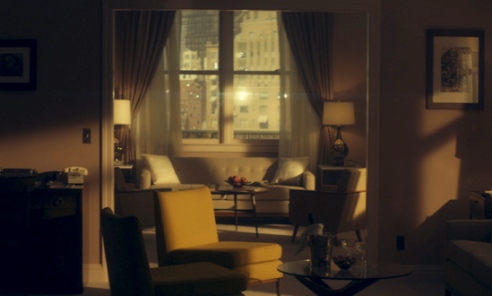
Philippe Parreno, Marilyn.
Palazzo Grassi
Screenings at the Teatrino
Cinema
Thursday, May 30, 2013 to Sunday, July 14, 2013
Teatrino
10 - 19
From May 30 to July 14, the Teatrino of Palazzo Grassi presents films directed by artists from the Pinault Collection and shown for the first time in Italy: Loris Gréaud and Philippe Parreno, two artists presented in the exhibition Prima Materia at Punta della Dogana, and Anri Sala, the artist representing France at the 2013 Venice Biennale.
Wednesday / Friday
Loris Gréaud
The Snorks: A Concert for Creatures, 2012, 22'
Sunday / Monday
Philippe Parreno
Marilyn, 2012, 23'
Thursday / Saturday
Anri Sala
1395 Days without Red, 2011, 43'
from 10am to 7pm
free entry until capacity is reached
ANRI SALA
1395 DAYS WITHOUT RED
2011, 43’
1395 Days without Red
A ?lm by Anri Sala
In collaboration with Liria Bégéja
From a project by Šejla Kameric and Anri Sala
in collaboration with Ari Benjamin Meyers
Commissioned by Artangel
Courtesy: Marian Goodman Gallery, New York; Hauser Wirth, London, Zurich
© ANRI SALA, ŠEJLA KAMERIC, ARTANGEL, SCCA / PRO.BA 2011
1395 Days without Red (2011) is the result
of a collaboration between Anri Sala and
composer Ari Benjamin Meyers. It recreates
the daily living conditions of people in
Sarajevo during the siege that lasted from
1992 to 1996 (the title alludes to the length
of the siege and to the color that the
residents stopped wearing in order to avoid
attracting the attention of snipers).
The camera follows a woman, played by
the Spanish actress Maribel Verdú, making
her way through a nearly deserted Sarajevo
in a re-enactment of the route taken daily
by thousands of citizens under threat of
sniper ?re. It is a known fact that
throughout the siege, the Sarajevo
Symphony Orchestra continued to perform.
In Sala’s work, the orchestra is shown
rehearsing Tchaikovsky’s 6th symphony,
the Pathétique, and as the musicians pause
to repeat various sections of the symphony,
so the woman halts in synchrony with them,
before resuming her walk through the city,
as if the music resounded in her head and
gave her the strength to carry on.
--
LORIS GRÉAUD
THE SNORKS: A CONCERT FOR CREATURES
2012, 22’
Loris Gréaud’s ?lm is an “underwater hip
hop symphony” stemming from the artist’s
fascination with the ocean depths and the
bioluminescent organisms living there and
whose light is described by biologists as
illuminating the bottom of the seas like
underwater ?reworks. After three years
of research and collaboration with
scientists, pyrotechnicians and musicians,
Gréaud directed the ?lm together with the
North American abstract hip hop group
Antipop Consortium who composed the
music. Gréaud also invited two artists from
the ?lm industry: actress Charlotte
Rampling and ?lm director David Lynch,
who narrate the story of the project.
This is part of a process that lasted over
three years and involved di?erent medias,
from the production of ?reworks to a
concert in the artist’s studio and some
projections in Times Square, New York.
The ?lm shows how the music composed
was transmitted as a concert to the
deep-sea creatures via sub-aquatic
equipments and highlights Gréaud’s main
interest: an exploration of the possibilities
of inter-species communication.
The Snorks: A Concert for Creatures
A project and ?lm
by Loris Gréaud, 2012
© LORIS GRÉAUD,
GRÉAUDSTUDIO FILM INC.
--
PHILIPPE PARRENO
MARILYN
2012, 23’
Marilyn (2012) is a work focused on
the idea of celebrating a dead person,
of portraying a ghost. It is a ?ctitious
evocation of Marilyn Monroe, the icon
of popular culture, and is set in the suite
of the Waldorf Astoria in New York, where
the actress lived in the 1950s. The three
algorithms that are used in biometrics to
identify an individual and which respectively
correspond to the voice, the handwriting,
and iris recognition, reproduce Marilyn’s
presence. The camera sees with her eyes,
a computer reconstructs her voice to
describe what the eyes see, and a robot
writes with her calligraphy what the voice
says. Through the use of a mathematical
equation and robotics, the work produces
a ?gure that is almost human, in the words
of the artist “an embodied image”.
Philippe Parreno has exceptionally agreed
to present this work in a screening room,
even though it is usually displayed in
a proper exhibition space, in the conditions
of appearing and disappearing that
the work requires.


